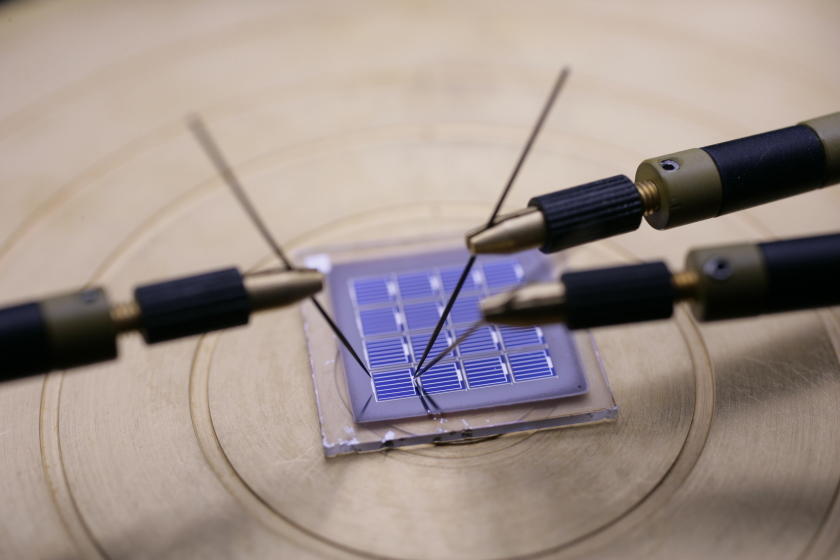The Research Centre
We strive to achieve a climate neutral society through science and innovation. This is why we drive materials discovery, create new sustainable technologies and empower the research community.
We take responsibility in our daily work for our ecological footprint and have set ourselves the goal of becoming greenhouse gas neutral by 2035 (more about sustainibility at HZB).
At the centre of focus are materials for energy conversion (solar cells) and storage (solar fuels), as well as quantum materials that could be of relevance in novel, energy-efficient information technologies. Catalysis materials are also being developed at HZB, for example for artificial photosynthesis and processes for CO2 conversion.
To perform research, HZB operates modern laboratories, infrastructures and instruments
Many laboratories and devices are available not only to its internal researchers, but also to national and international research communities.
The most-used infrastructure is the electron storage ring BESSY II, a particle accelerator that delivers a special kind of X-ray radiation. This is known as synchrotron radiation.
This radiation can be adjusted over a large energy range. The main emphasis of BESSY II is soft X-ray light. That means BESSY II is perfectly optimised to be used for energy research. This is because the wavelength region of soft X-rays is especially well suited to detecting material effects and the motion of charge carriers in thin layers of solar cells, solar fuels, catalysts and storage media.
BESSY II for the research community
BESSY II@HZB offers the experimental infrastructure for a broad research community in the field of condensed matter (research into solid and liquid matter). The microscopy and spectroscopy instruments are especially highly valued, as are the experimental stations for protein structure analysis, which primarily attract biologists and medical researchers.
The possibilities of femtoslicing – a certain method of time-resolved measurement – are unique. BESSY II has an excellent reputation in the research community, especially for its reliability and high output of research results. At our electron storage ring BESSY II, we have an average of 2700 visits from guest researchers per year from 28 countries.
HZB in the Helmholtz Association
HZB is one of 18 research centres that have consolidated in the Helmholtz Association. The centres of the Helmholtz Association have conducted their research and development since 2001 together in the programmes of the six Helmholtz research areas. These are the bases for funding and evaluation.
The programmes and the scientific problems they address are divided into units, as topics. With each research period, every five years, the research programmes are adjusted or new programmes drawn up. These are evaluated by international experts. A competition is held between the topics and the programmes (programme-oriented funding, POF). This is aimed at promoting cooperation between the centres involved.
During the POF IV funding period, the Helmholtz-Zentrum Berlin participates in a total of five programmes as part of the Helmholtz research fields “Energy” , “Matter” and "Information".
A look into the future
- The synchrotron BESSY II is our flagship. It operates full time, and yet we are currently working on new accelerator schemes in the BESSY VSR demo project. VSR stands for Variable-pulse-length Storage Ring.Variable refers to the fact that future users will be able to set up each experimental station individually depending on whether they require long or short X-ray light pulses for their experiments.
- Furthermore, we are already working on BESSY III, the Next Generation Berlin synchrotron. Thanks to close networking and collaboration with our partners, such as the Physikalisch Technische Bundesanstalt (PTB), the Max Planck Society, and the Universities of Berlin and Potsdam, Berlin has established itself as THE location for research with soft X-ray radiation. Key areas in research have been established here such as metrology with synchrotron radiation.
- The Berlin political circles are advocating and have reserved a possible location for a synchrotron BESSY III in Adlershof.
> Projects for the future


